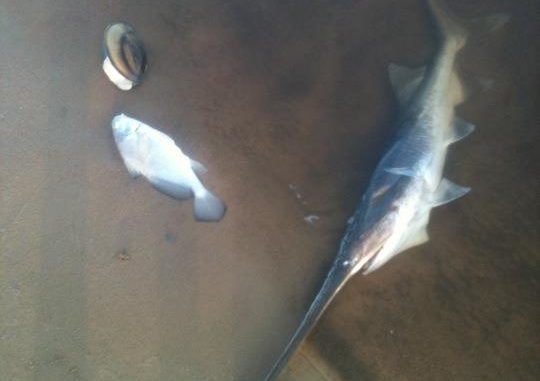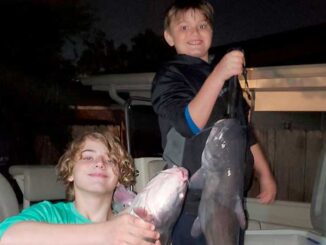
River flow increased to flush out low-oxygen water, LDWF says.
Temple-Inland Inc. admitted a discharge at it’s Bogalusa plant caused the massive Pearl River fish kill that has included bass, catfish, paddlefish and federally protected Gulf sturgeon.
“We never lose sight that we are members and supporters of the Bogalusa area and apologize for the impact this issue at the mill has had on the Pearl River, its aqua culture (sic) and surrounding communities,” Temple-Inland’s Doyle Simmons said today (Aug. 17) in a news release. “We are working diligently and expeditiously to remove the fish kill and restore the quality of the river.”
The company said it believes that an “exceedence” of discharge above the level for which it is permitted depleted the river’s dissolved oxygen levels, leading to the kill that began on Saturday (Aug. 13).
Temple-Inland’s Vice President Jay Wilson told the Associated Press this discharge consisted mostly of water and “black liquor,” a byproduct of the process in which wood is converted to pulp.
Wilson said this byproduct is biodegradable, stressing that the fish kill wasn’t caused by toxicity but because of the concentration of black liquor that lowered the oxygen levels along the river.
The Louisiana Department of Wildlife and Fisheries said today (Aug. 17) the Pearl River Valley Water Supply District increased the discharge from Ross Barnett Reservoir near Jackson, Miss., to increase the flow down the Pearl River and help mitigate the low oxygen levels.
Fisheries biologists on yesterday surveyed 36 miles of the West Pearl River from Holmes Bayou to the Rigolets yesterday, the LDWF said.
An estimate of how many fish have died in the kill has not been released, but it’s certain to be many thousands. The Associated Press said the kill could include hundreds of thousands of fish, and on-the-scene reports indicate this could be the case.
“(I) went up the Pearl north of lock 1 (and) the river is dead …,” LouisianaSprotsman.com user v_NOLA posted on the site Monday (Aug. 15). “Seen thousands of dead fish, clams, shrimp, etc., for MILES.”
LDWF did said that, to date, 24 species of fish have been part of the kill, including bass, bluegill, catfish, paddlefish, Gulf sturgeon and two species of freshwater mussels.
The Department of Health and Hospitals recommends the following precautions, if a fish kill is encountered:
• Stay out of the affected waters – If you were exposed to these waters, then bathe well with soap and water. Use antiseptics on any open cut or wound.
• Do not eat, handle, or collect any fish or shellfish from the affected waters.
• Do not let pets wade or swim in, drink, or eat fish from the affected waters.
• Seek medical advice if you experience illness that may be related to exposures to a fish kill, such as skin irritation or infection, upset stomach, sore throat, or breathing difficulty.
